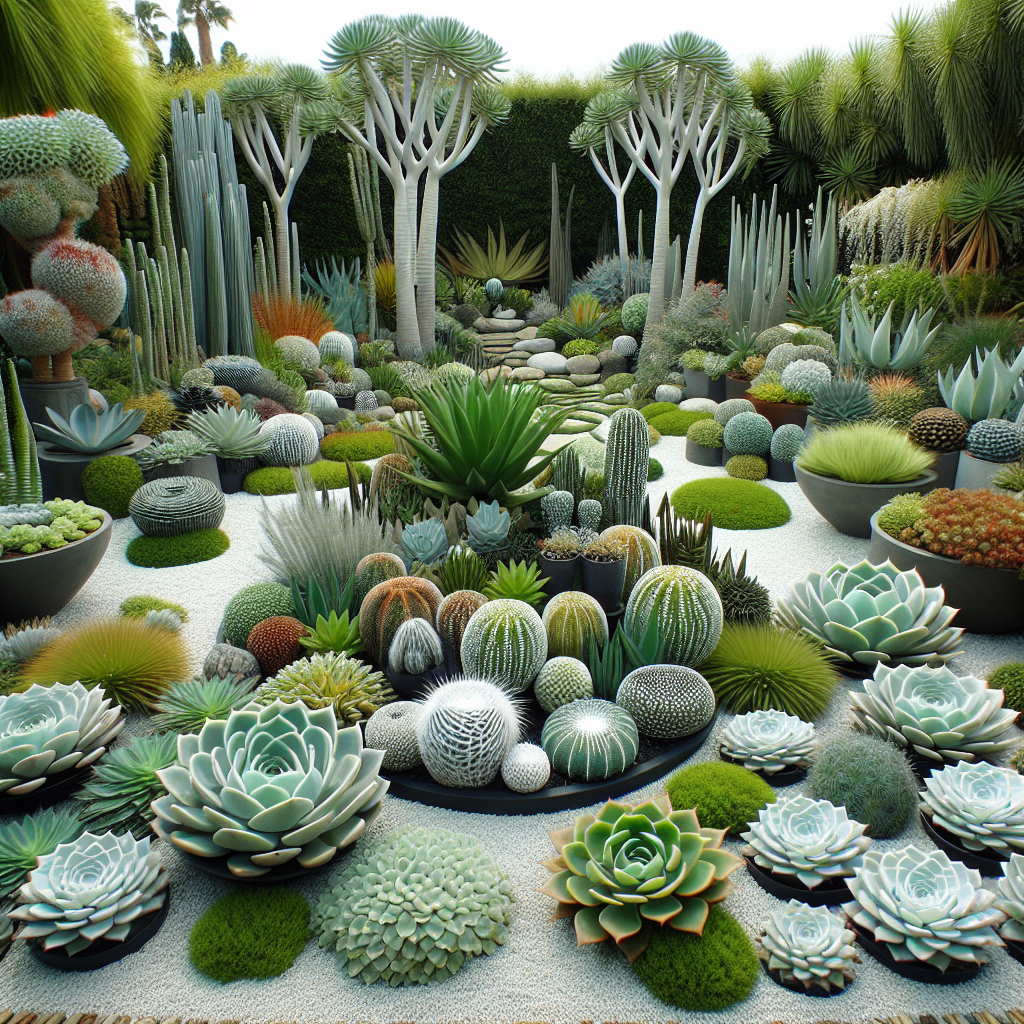Creating a Succulent Symphony: A Guide to Mixing and Matching Succulents for a Modern Garden

Creating a succulent symphony in your garden is like composing a beautiful piece of music. Just as a symphony is a harmonious blend of different musical instruments, a succulent garden is a delightful mix of various succulent species, each with its unique shape, size, color, and texture. Incorporating a variety of succulents into your garden design can transform your outdoor space into a modern, low-maintenance oasis that is pleasing to the eye and easy to care for.
To start your succulent symphony, you need to choose the right succulents. There are thousands of succulent species to choose from, each with its unique characteristics. Some succulents, like the Echeveria, are known for their rosette shape and wide range of colors. Others, like the Aloe Vera, are prized for their medicinal properties. Still, others, like the Jade Plant, are loved for their ability to grow into large, tree-like structures. The key is to select a variety of succulents that complement each other in terms of color, size, and texture.
Once you’ve chosen your succulents, it’s time to arrange them in your garden. Just like a symphony, your succulent garden should have a balance of highs and lows, lights and darks, and solids and voids. You can achieve this balance by grouping similar succulents together and contrasting them with different ones. For example, you can group together rosette-shaped succulents of different colors and contrast them with tall, columnar succulents. You can also play with light and dark by placing brightly colored succulents next to darker ones.
In addition to arranging your succulents, you also need to consider their care. Succulents are known for being low-maintenance plants, but they still need the right conditions to thrive. Most succulents prefer well-draining soil and plenty of sunlight. However, some succulents, like the
The Art of Designing a Modern Garden with a Variety of Succulents: A Succulent Symphony
Succulent Symphony: Incorporating a Variety of Succulents for a Modern Garden Design
The art of designing a modern garden with a variety of succulents is akin to composing a symphony. Each plant plays a unique role, contributing its own texture, color, and form to the overall composition. When thoughtfully arranged, these diverse elements can harmonize into a stunning visual performance that captivates the senses and elevates the aesthetic appeal of any outdoor space.
Succulents, with their myriad shapes and shades, are the perfect protagonists for this botanical ballet. These hardy plants are not only visually striking but also incredibly versatile and easy to care for, making them an ideal choice for modern garden design. From the rosette-shaped Echeveria to the towering Agave, the world of succulents offers an abundance of options to explore and experiment with.
To start your succulent symphony, consider the layout of your garden. Just as a composer would arrange the sections of an orchestra, think about how you can position different types of succulents to create a balanced and cohesive design. Larger succulents can serve as focal points, while smaller varieties can fill in gaps and provide visual interest at lower levels. Remember, the goal is to create a harmonious blend of forms and colors that pleases the eye.
Next, think about color. Succulents come in a wide range of hues, from the soft, pastel tones of Sedum to the vibrant, fiery shades of Crassula. By carefully selecting and combining different varieties, you can create a dynamic color palette that adds depth and dimension to your garden. Don’t be afraid to mix and match – sometimes, the most unexpected combinations can yield the most stunning results.
Texture is another important element to consider. The smooth, glossy leaves of an Aloe plant can provide a striking contrast to the rough, spiky surface of a Cactus. By playing with different textures, you can add
